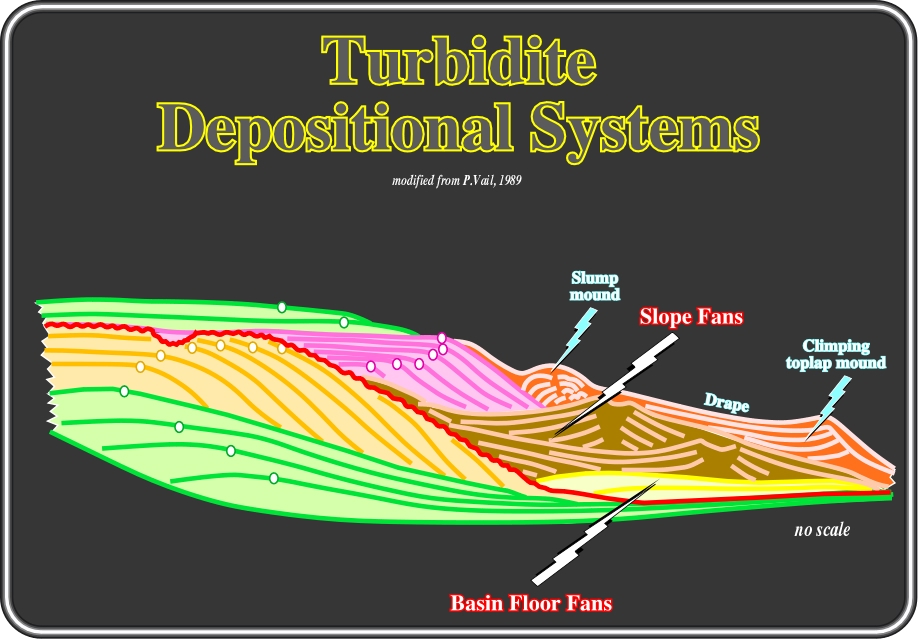
Universidade Fernando Pessoa
Porto, Portugal

Turbidite Systems in Hydrocarbon Exploration
Caveat:
These notes should not be taken as an attempt to write a textbook. They are just an eclectic assemblage of geological models, cross-sections and seismic profiles used during our workshops. However, it must be said that they are mainly built up on the publications and courses of P. Vail (Rice University), E. Mutti and S. Mora (Parma University) who we would like to thanks for their teaching and allowing us to used their ideas. On the other hand, for confidential reasons, some of the seismic lines are illustrated only by geological interpretations, which can be used without authorization. You can contact the lead author at ccramez@compuserve.com

Several geological models have been invoked to explain marine turbidite depositional systems. In this short course, we will focus on Vail and Mutti's geological models, since they are, by far, the most useful in petroleum exploration.
Contents:
I - Turbidite Deposits in HC Exploration II - Geological Events III - Completness and Preservation IV- Turbidity Currents V - Turbidite Models VI - Depositional Turbidite Systems VII - Turbidite Facies and Related Processes A) Bouma's Turbidite Facies B) Mutti's Turbidite Facies VIII - Turbidite Systems Classification A) Vail's Model A.1) Sequential Stratigraphy Review A.2) Lowstand Systems Tract (i) Basin Floor Fan (ii) Slope Fan (iii) Lowstand Prograding Wedge B) Mutti's Model (i) Large Turbidite Systems (ii) Medium Turbidite Systems (iii) Small Turbidite Systems 1- Rectilinear Turbidite Channels 2- Sinuous Turbidite Channels IX - Exercises X - Bibliography